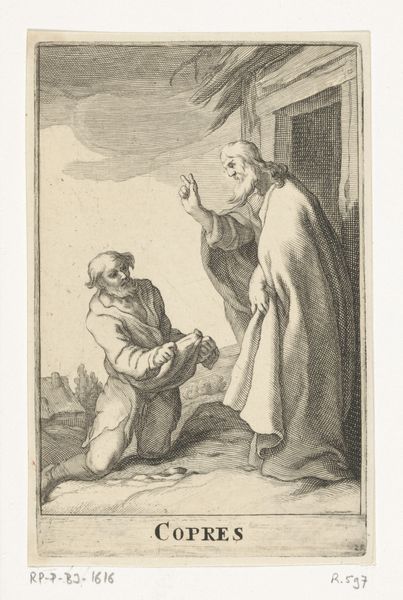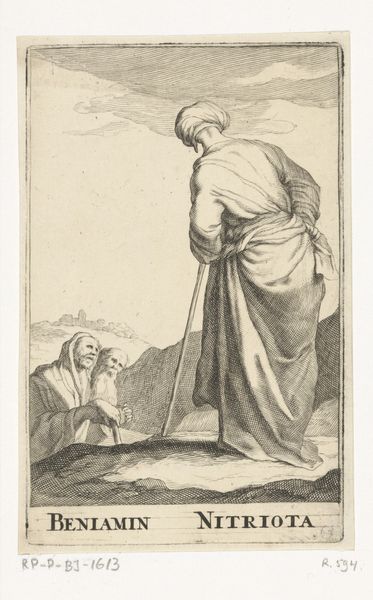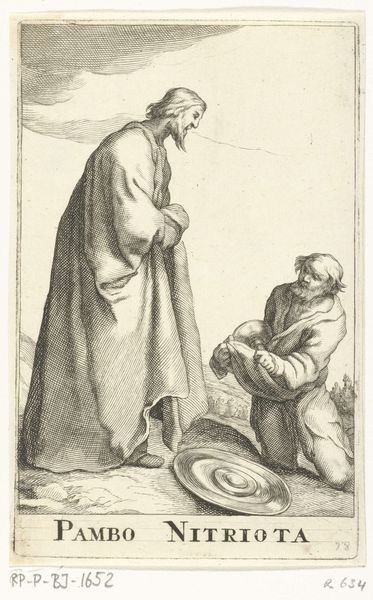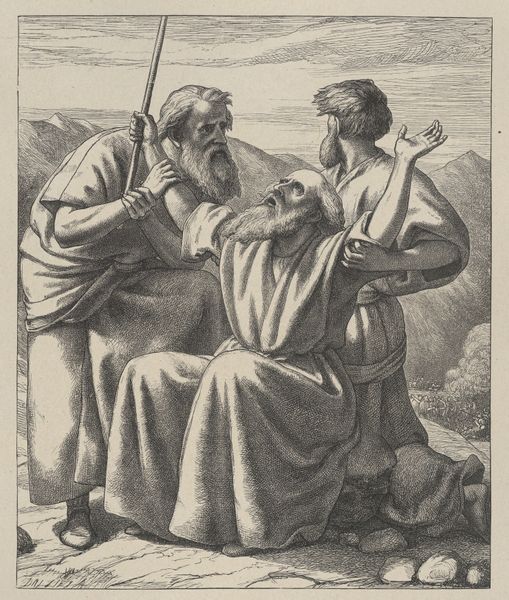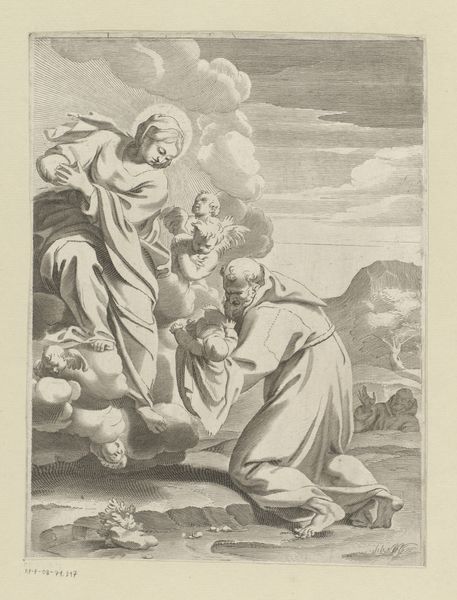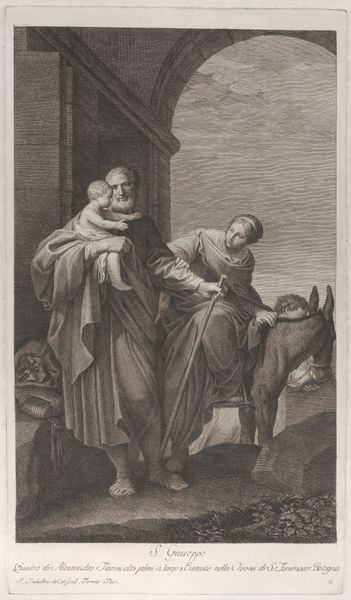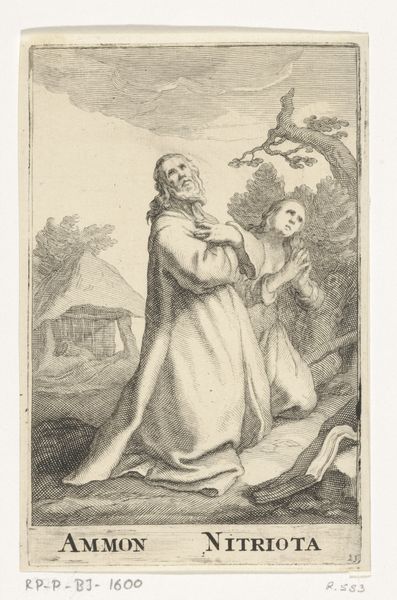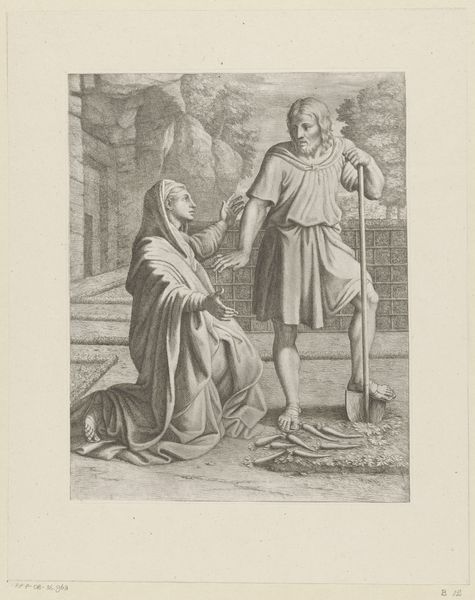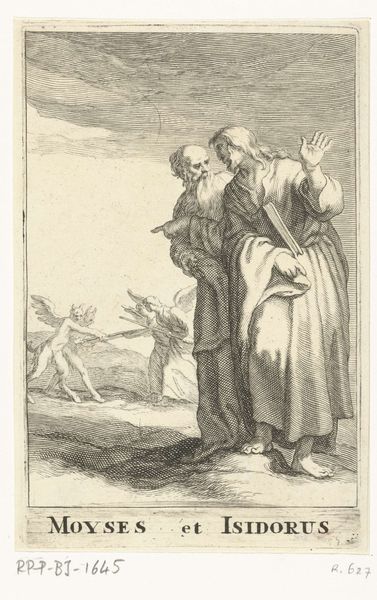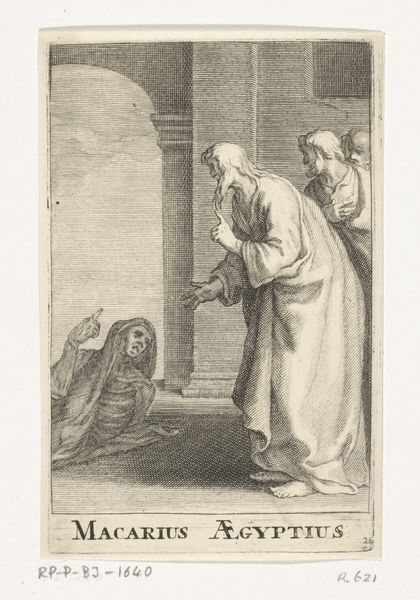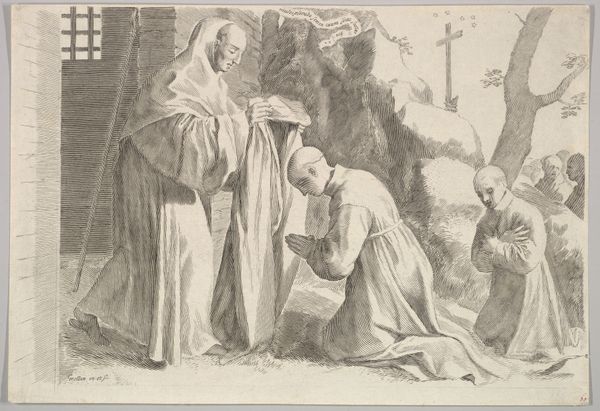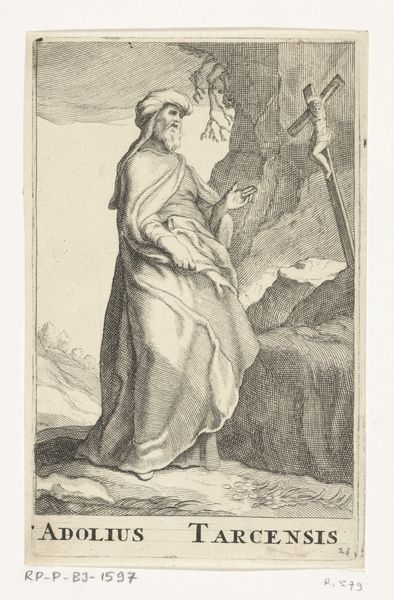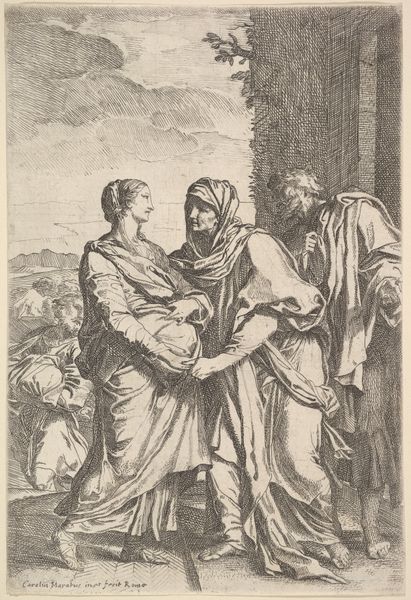
print, engraving
#
baroque
# print
#
old engraving style
#
caricature
#
history-painting
#
engraving
Dimensions: height 135 mm, width 85 mm
Copyright: Rijks Museum: Open Domain
Curator: Looking at "Heilige Anastatius," an engraving created after 1636 by Frederick Bloemaert, my first impression is stark. It feels austere, with that contrast between the standing figure gesturing authoritatively and the kneeling figure, vulnerable and holding a book. The use of line is fascinating. Editor: It certainly commands attention with its simplicity. Considering its placement here at the Rijksmuseum, let’s consider the socio-historical context. "Heilige Anastatius" reflects the Counter-Reformation’s emphasis on religious figures and their stories as tools for instruction. We see it throughout 17th-century art, really. Curator: Absolutely. And looking at it materially, this engraving gives us insight into printmaking’s role in disseminating those religious and historical narratives. These weren't unique works meant for a privileged few, but designed to be reproduced and spread, reaching a broader audience. Editor: Tell me more about that distribution because the social consumption of images definitely matters here. These prints often circulated within specific social circles, like monastic orders or learned societies, as forms of devotional material or objects of study. How does that relate back to labor and creation? Curator: The labour behind such works cannot be ignored. Skilled engravers like Bloemaert played a vital role, translating paintings or drawings into print form. They were essential facilitators in circulating ideas. In terms of intersectionality, you could argue it speaks volumes about access to information across demographics in that historical context, though obviously filtered through power structures. Editor: I’d add that examining the materials, like the paper itself and the inks, is critical. They dictate longevity but were tied to specific regions, industries, and trade networks, thus the cost and potential accessibility of the final work. Even small differences can show something profound about consumption practices. Curator: That's very true. Considering our understanding of religion today, this engraving can prompt reflection on representations of faith and power, on who gets to interpret and dictate these narratives, and how these images affect us. Editor: Precisely. Reflecting on this piece reminds us how the tangible aspects of production influence not only the aesthetic experience but also our collective social understanding. The artwork’s materials and the ways those materials were spread matter. Curator: Indeed. Bloemaert's "Heilige Anastatius" invites contemplation of historical, religious, and social structures through this precise work of art. Editor: Agreed. It reminds us that close observation can lead to deeper appreciation for material culture’s layered connections across centuries.
Comments
No comments
Be the first to comment and join the conversation on the ultimate creative platform.
